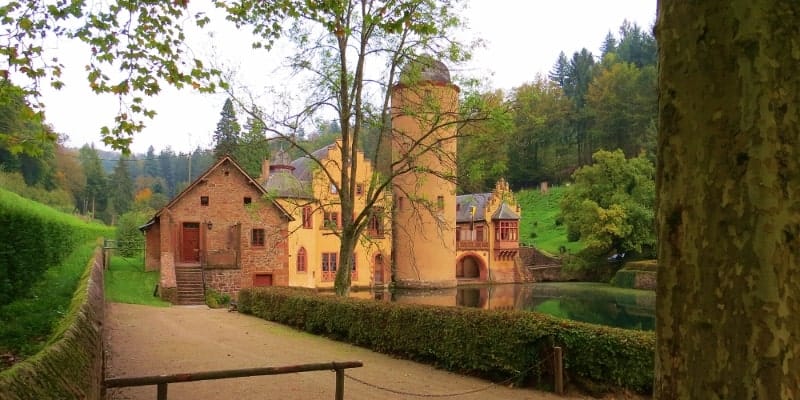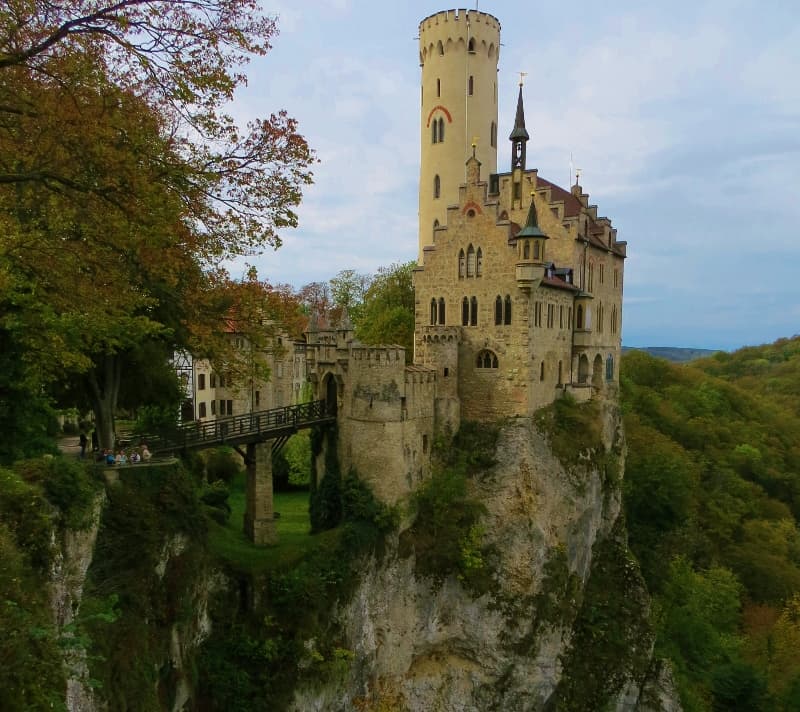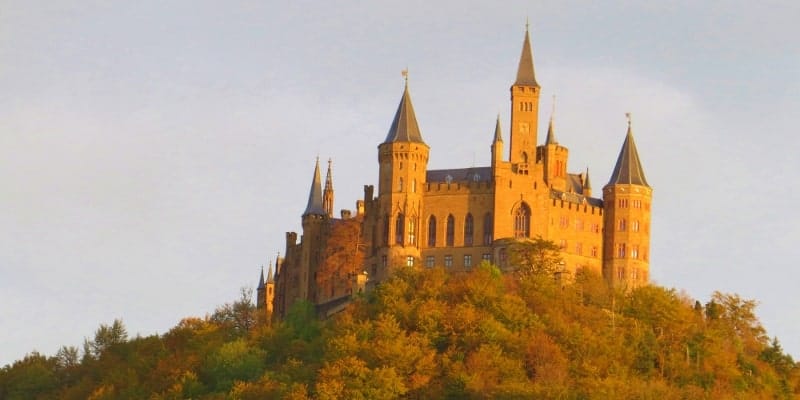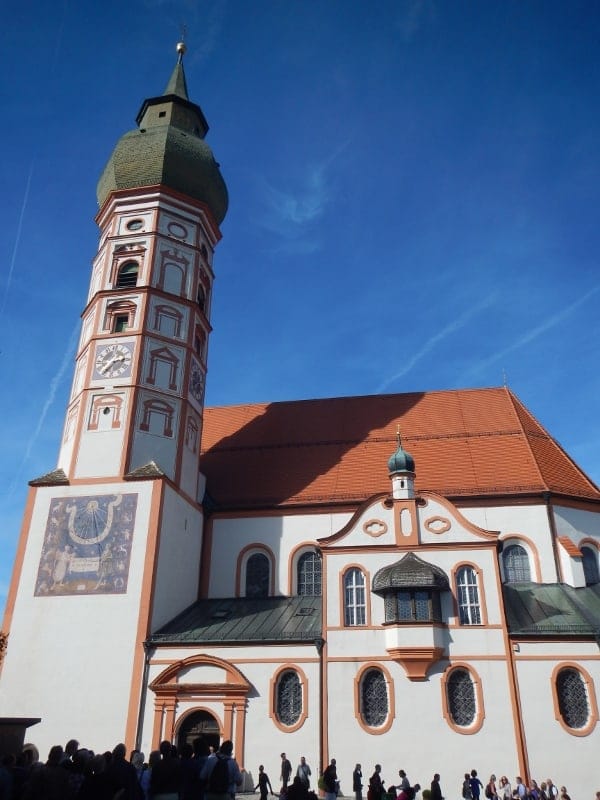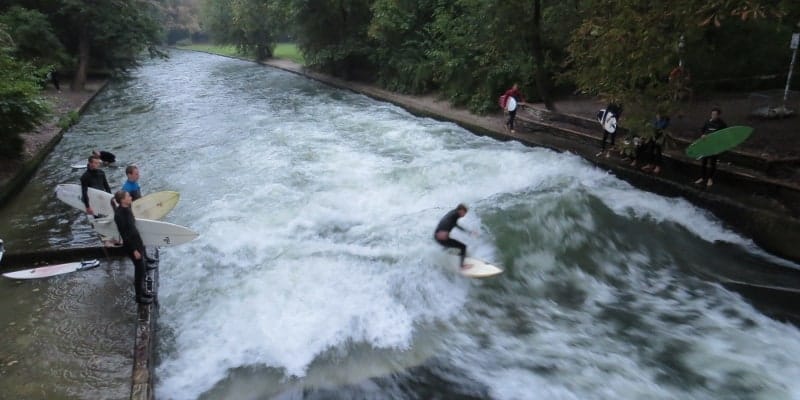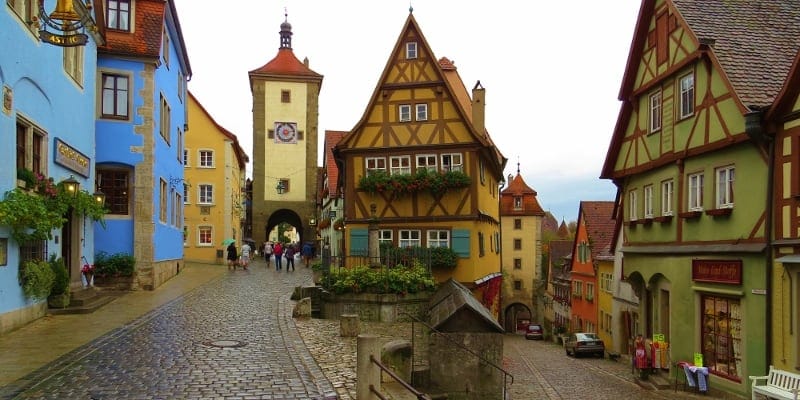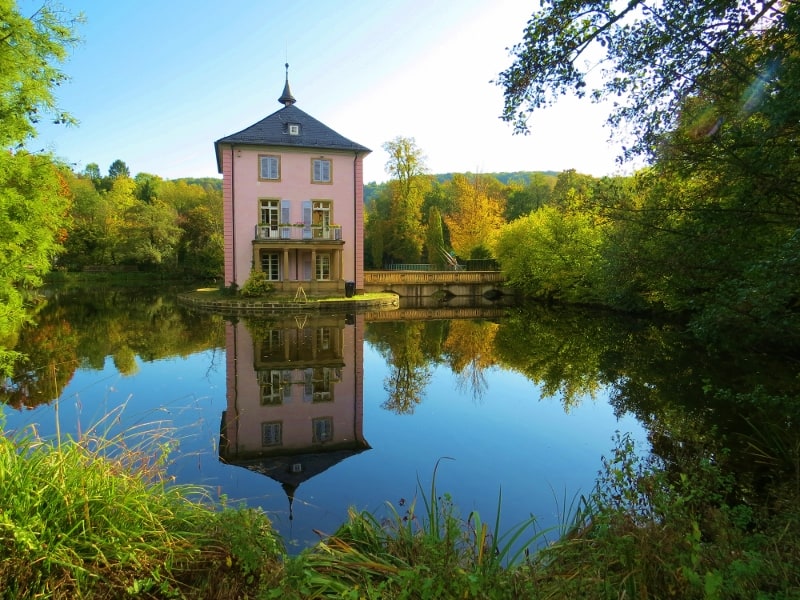Our favorite castles in Germany near Frankfurt and Munich:
We were crazy enough to visit Neuschwanstein Castle on a public holiday. This meant that along with all the Asian tourists, there were an awful lot of Germans. Plus, even though we arrived by 11 am, the soonest tickets we could buy were for the German tour at 2.30 pm, as the terms in English were sold out until 4 pm. So, if you don’t have German friends at hand to translate the tour for you, we recommend booking in advance online. The castle was impressive, and the time was undoubtedly fascinating! Don’t worry, I won’t spill the beans, but the manmade Grotto room made my jaw drop!
Mespelbrunn Castle is located on a pond between Frankfurt and Wurzburg. Unfortunately, we arrived 30 minutes after its closing time of 5 pm, but it looked cool from behind the fence!
Lichtenstein Castle is located on a clifftop near Stuttgart and costs 6 euros per person for a tour in German; however, they did give us a very informative written guide in English. This castle is small compared to Hohenzollern castle, but its story is fascinating. Tanks shelled it in World War II, and today you can still see the cracked mirror from where a small fragment of a tank grenade ricocheted!
Hohenzollern Castle is not too far from Lichtenstein Castle. It is located on a hilltop near Hechingen, and we enjoyed the guided tour. Along with getting to wear GIANT slippers, make sure you explore the casemates and secret passages. One sign made me want to learn more. It read, “Exactly where these steps lead to is unknown. More casemates and secret passageways are likely waiting to be discovered in the heart of the mountain”!
Heidelberg Castle was a lot larger than we expected! Unfortunately, we had spent far too much time at the Auto & Technik Museum in Sinsheim, so we did not have time to explore this castle. But if we get the chance, we will explore the town and its castle next time in Germany.
On our drive from Munich to Frankfurt, we also loved:
The beer garden at Andechs Monastery was just like Oktoberfest but amongst trees and more family-friendly. The beer was cheaper, and the food was great, including the giant pork knuckle, which Moss could not finish. It was also fun walking up multiple flights of stairs to the tower’s very top.
Three hours in Rothenburg was not enough to explore this wonderful medieval town! We recommend getting your hands on a city map from the tourist information office. We enjoyed Roder Gate, walking along the wall and exploring the 17th-century spital bastion, plus Moss lost me in the Kathe Wohlfahrt Christmas shop for over half an hour, and I didn’t even buy anything!
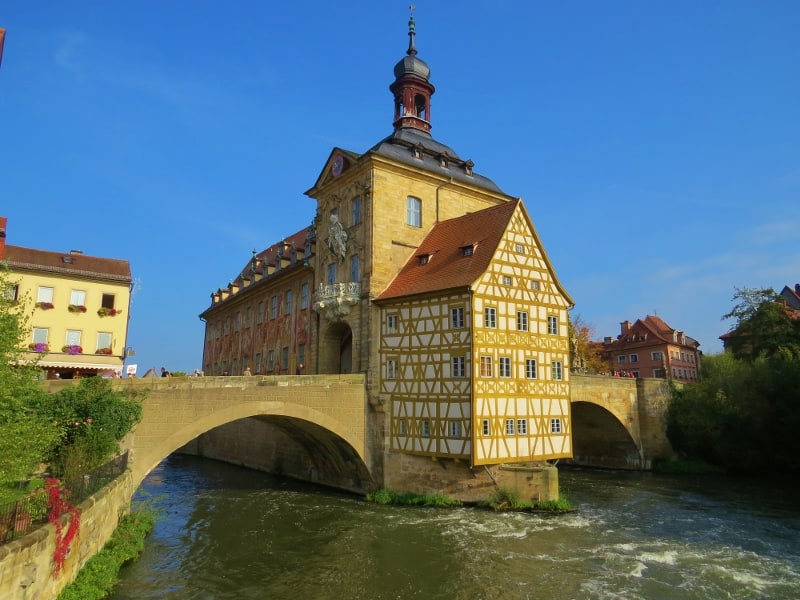
Bamberg was a neat town with old buildings in the center of the river and had a famous smoked beer which Moss just had to try!
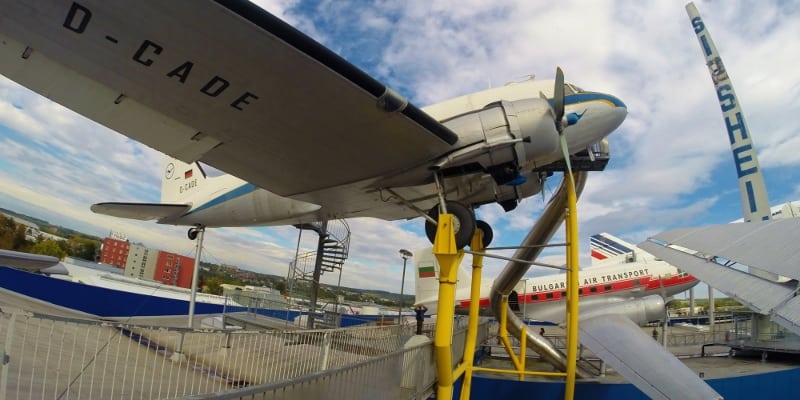
I’m not the hugest car or plane fanatic, but even I enjoyed the Auto & Technik Museum in Sinsheim. A highlight for me was sliding out of an airplane (from the museum’s roof)!
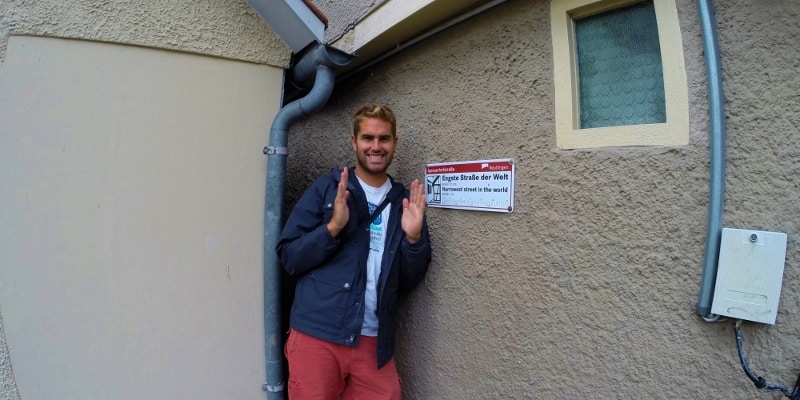
Don’t go out of your way to see it, but the world’s narrowest street in Reutlingen is worth a photo if you are passing through.

In Frankfurt, go to the old part of town for an apfelwein and see the Frau Rauscher statue – watch out, she spits about every 12 seconds!
The average person would Google Munich to Frankfurt and see that it only takes about 3 ½ hours depending on how fast you wish to drive on the autobahn! However, we are NOT typical. We took one look at train prices and decided that hiring a car wouldn’t cost too much more.
Suppose you’re interested in traveling to Germany for a damn good deal. In that case, plenty of tour companies have some pretty unique and affordable vacation packages to Berlin, Munich, and Bavaria.
We aren’t going to tell you our exact route. Still, after surviving Oktoberfest in Munich, we did a giant zigzag to see as many castles and medieval towns as possible. So to save you doing so much driving, we have picked our favorite cities and castles. First of all, ‘Ausfahrt’ is not a destination accessible from every off-ramp! It means ‘Exit’! Another word of wisdom to keep in mind is that the autobahns with speed limits do have speed cameras… and the flash is blinding!


